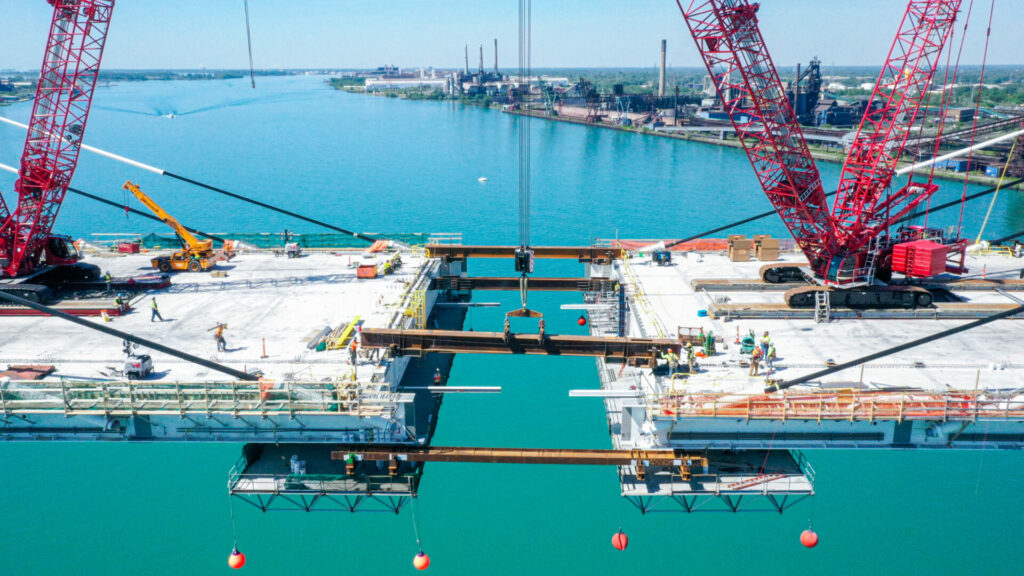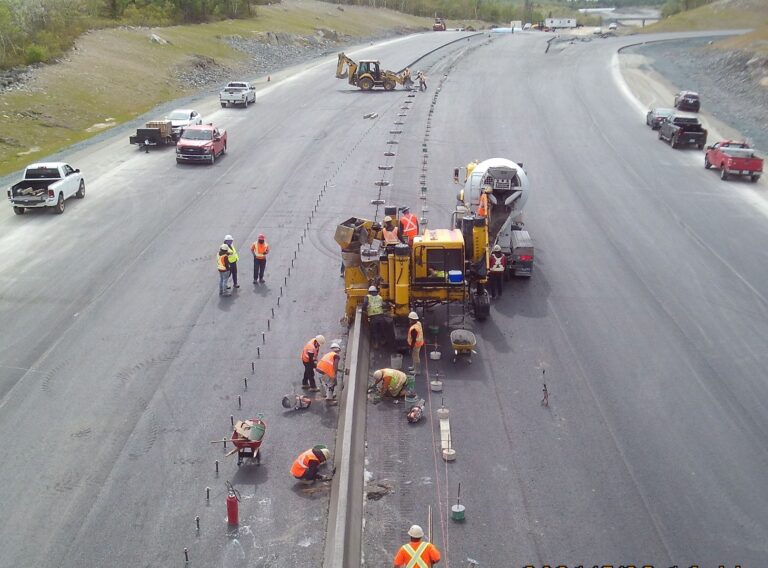Construction crews building the Gordie Howe International Bridge between Windsor and Detroit have reached a major milestone connecting the two ends of the project.
According to updates posted on the bridge’s X account (formerly Twitter), engineers and ironworkers from Canada and the U.S. finished installing the remaining edge girders that allow for the final deck gap to be built.
“Canadian and U.S. ironworkers shake hands across the border as the Gordie Howe Bridge deck officially becomes an international crossing, connecting our two great countries,” said one post.
Construction of the six-lane, $6.4-billion bridge began in 2018. It was supposed to be finished in 2024, but in January officials said the target opening got pushed back to September 2025. However, major construction is set to be done sometime this year.
The Gordie Howe International Bridge project is No. 12 on ReNew Canada’s 2024 Top100 Projects report.

The Windsor-Detroit Bridge Authority (WDBA) said crews are in the ninth step of a 13-step construction process.
Step 1: Complete segment 27 on each side, leaving a gap that should measure approximately 11 metres/36 feet. The bridge deck is built one segment at a time, with each side requiring 27 pre-designed segments. Segments are composed of steel edge girders, steel floor beams, steel redundancy girders, concrete precast panels and steel soffit panels and. On average, they are 15 metres/49 feet long and 37.5 metres/123 feet wide. The gap will be filled by the mid-span closure, the last segment needed to connect the two sides.
Step 2: Crews use temporary jacks to move the Canadian bridge deck approximately six inches to allow for enough clearance for the mid-span closure. Although it was previously established that the gap should be approximately 11 metres/36 feet, it may be wider or narrower depending on the conditions at the time of installation.
Step 3: Perform a global survey on the entire structure and re-stress stay cables as needed to ensure adequate vertical alignment of both sides of the bridge deck.
Step 4: Two cranes, one on each side of the bridge deck, are centered on segment 26 (US side), and segment 25 (Canadian side), in preparation for the mid-span closure.
Step 5: Six temporary bracing pieces (closure beams, wind struts, and transverse cranks) are installed to hold the deck in alignment. From land, it will now appear as though the bridge deck is fully connected. However, there are still a few steps to go.
Step 6: Engineers physically measure the gap again. An exact measurement ensures a 2 perfect fit when installing the components for the mid-span closure.
Step 7: Install two structural steel edge girders. The first edge girder is bolted to the US side. Workers then use lock-up devices and temporary jacks to achieve correct alignment. Finish bolting the same edge girder to the Canadian side. The sequence is repeated for the second edge girder.
Step 8: Remove temporary closure beams and wind struts.
Step 9: Install the remaining components for the mid-span closure. This includes nine redundancy girders, two floor beams, 12 precast panels and 12 soffit panels. Unlike the other segments, the mid-span closure does not require stay cable installation.
Step 10: Install concrete precast panels and complete bolting of all mid-span closure components.
Step 11: Perform a global survey on the entire structure again, re-stress stay cables as needed and stitch concrete precast panels.
Step 12: Remove the remainder of the temporary bracing (transverse cranks) and remove deck cranes. At this point, we have achieved a significant landmark with the longest main span of any cable-stayed bridge in North America now connected.
Step 13: While this completes the connection, it does not mean the bridge is ready for use. A substantial amount of work is still needed, including the re-stressing of stay cables, post-tensioning of the deck and the installation of electrical, fire suppression, drainage systems, barriers, signage, lighting, deck paving and pavement markings and complete the multi-use path. This work will occur over the next year.
Featured image: Construction crews celebrate the connection the two sides of the Gordie Howe International Bridge between Windsor, Ont. and Detroit, Michigan. (Gordie Howe International Bridge)











